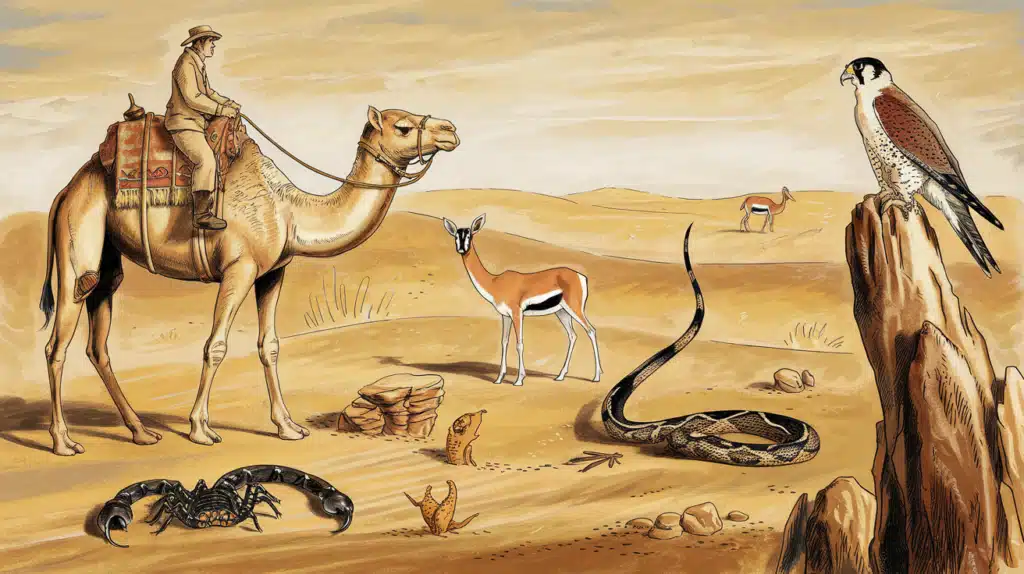Most people see deserts as lifeless stretches of sand and rocks.
The scorching heat, limited water, and harsh conditions make these areas seem uninhabitable for any living thing. When students and nature lovers search for information about desert wildlife, they often find incomplete lists or complex scientific terms.
This blog makes desert wildlife simple to understand. It reveals 101 remarkable animals that have found clever ways to live in Earth’s driest places.
Readers will learn about quick-footed foxes, burrowing owls, and resourceful rodents.
The blog breaks down complex survival methods into simple explanations, showing how each animal manages to thrive in its sandy home.
Key Factors That Help Animals Survive in the Desert
Here are key factors that help animals survive in the desert:
1. Water Conservation
Desert animals have adapted to minimize water loss. Some can survive without drinking for long periods, absorbing moisture from the food they eat or extracting it from the air.
2. Temperature Regulation
Many desert animals are nocturnal, becoming active during cooler night hours to avoid the intense daytime heat. Some also have reflective or light-colored fur, helping them stay cooler by reflecting sunlight.
3. Efficient Movement
Animals like camels and lizards have evolved to conserve energy while moving, allowing them to travel long distances without exhausting their resources.
4. Camouflage and Hiding
Desert animals often have colors or patterns that blend into the environment, helping them avoid predators and extreme temperatures.
5. Specialized Diets
Many desert animals have adapted to eat foods that require little to no water. For instance, herbivores feed on drought-resistant plants, while carnivores may rely on animals that store water in their bodies.
Desert Animals that Live on Land
1. Fennec Fox
With its oversized ears and sand-colored coat, the Fennec Fox is perfectly adapted to the scorching deserts. It survives extreme heat by being nocturnal and burrowing underground.
- Scientific Name: Vulpes zerda
- Where Found: Sahara Desert, North Africa
- Conservation Status: Least Concern
2. Dromedary Camel
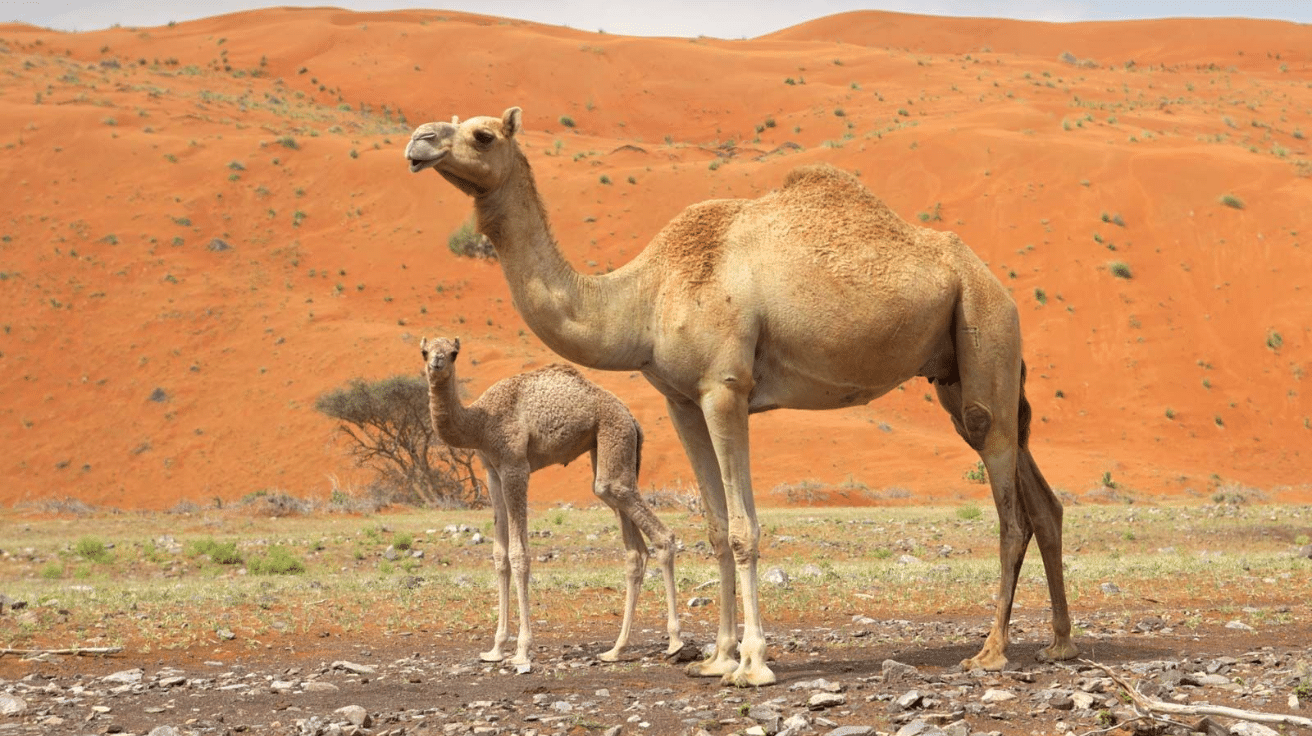
Nicknamed the “Ship of the Desert,” the Dromedary Camel is built for endurance, capable of going weeks without water. Its single hump stores fat, not water, for survival.
- Scientific Name: Camelus dromedarius
- Where Found: North Africa, Middle East, South Asia
- Conservation Status: Domesticated (Extinct in Wild)
3. Kangaroo Rat
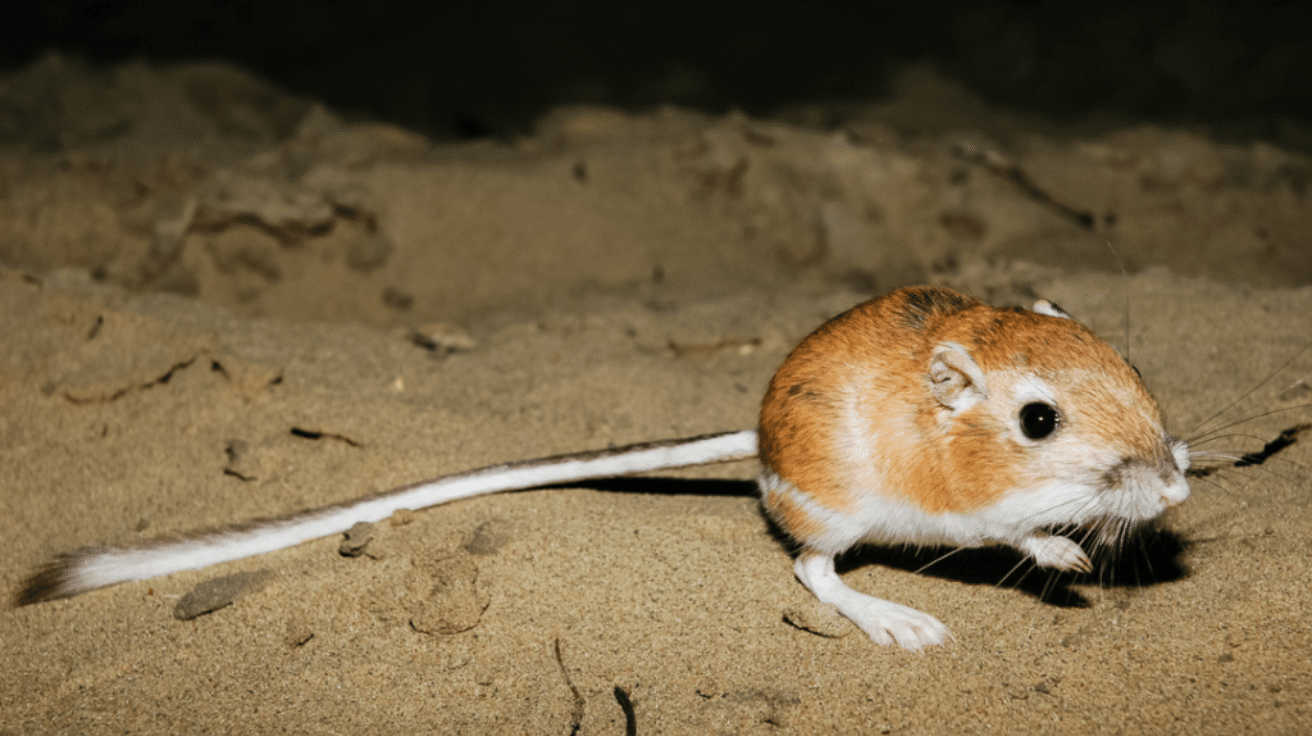
This tiny rodent never drinks water—extracting all it needs from seeds. It hops like a kangaroo and avoids predators by making quick, zigzag movements.
- Scientific Name: Dipodomys spp.
- Where Found: Southwestern United States, Mexico
- Conservation Status: Varies by species
4. Meerkat
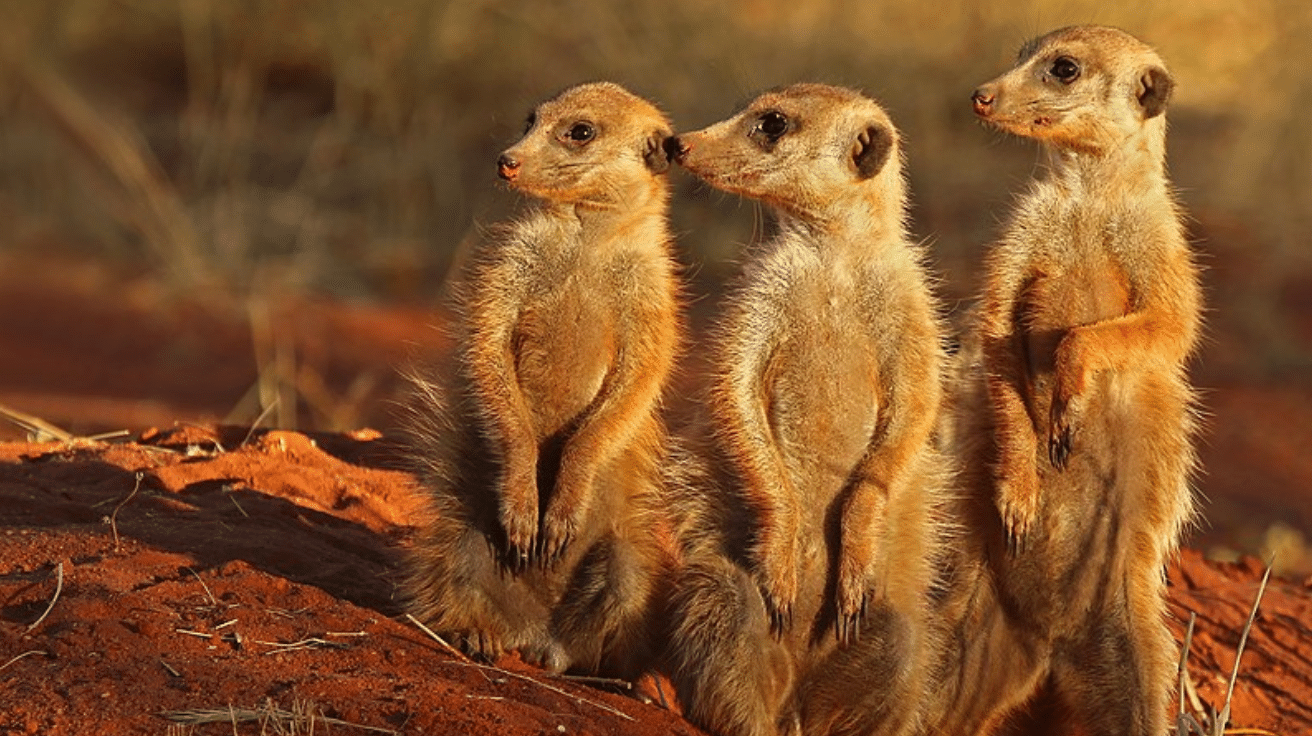
Meerkats live in tight-knit groups, standing on their hind legs to keep watch for predators. These social creatures dig elaborate tunnel systems for shelter.
- Scientific Name: Suricata suricatta
- Where Found: Southern Africa, Kalahari Desert
- Conservation Status: Least Concern
5. Jerboa
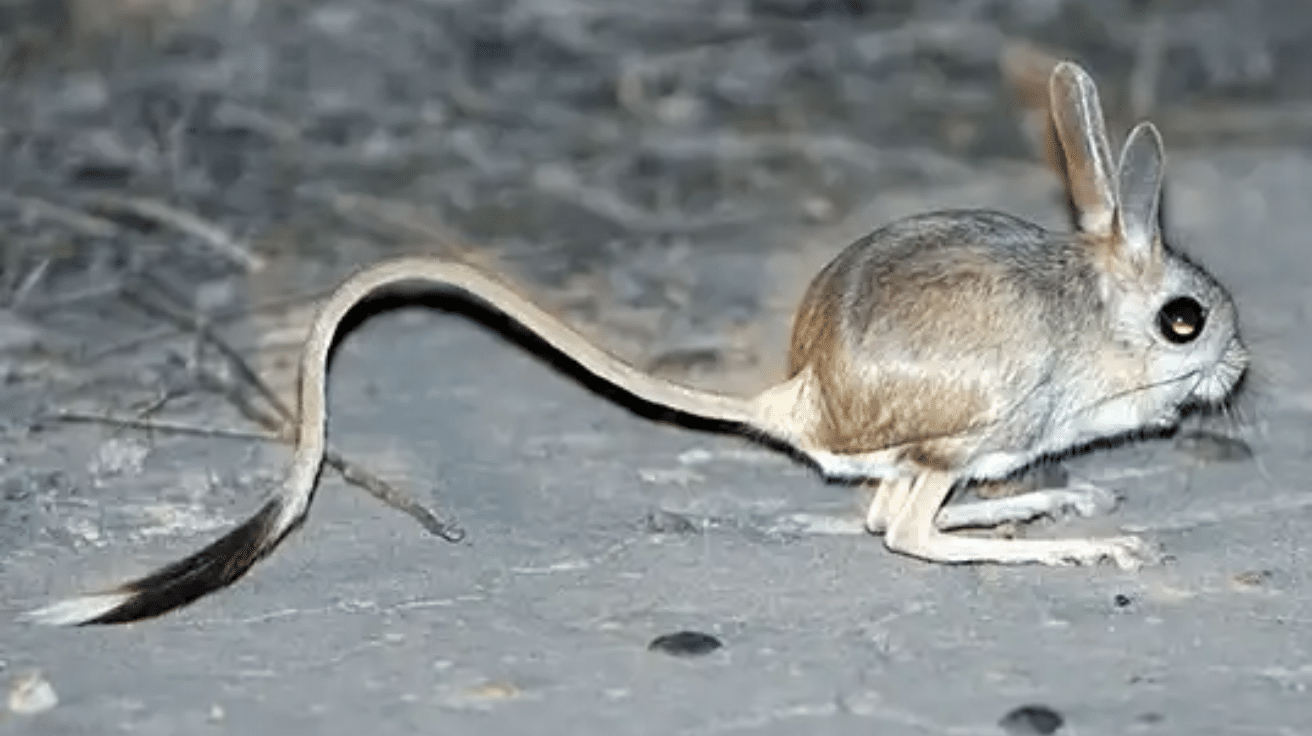
A desert rodent with long hind legs for jumping, the Jerboa moves like a tiny kangaroo. It thrives in arid environments and rarely needs to drink water.
- Scientific Name: Dipodidae family
- Where Found: North Africa, Middle East, Central Asia
- Conservation Status: Varies by species
6. Sidewinder Rattlesnake
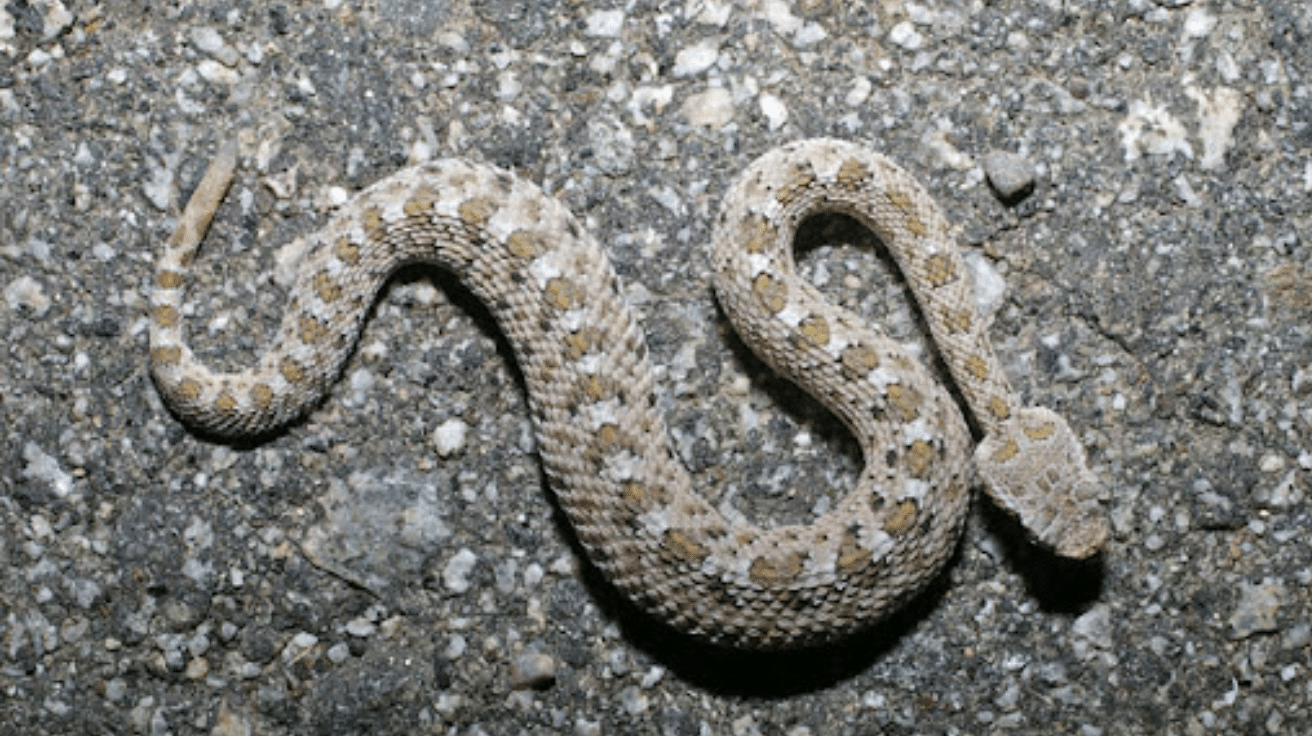
This venomous snake moves sideways across the sand, reducing contact with the hot surface. Its heat-sensing pits help locate prey in the dark.
- Scientific Name: Crotalus cerastes
- Where Found: Southwestern United States, Northern Mexico
- Conservation Status: Least Concern
7. Gila Monster
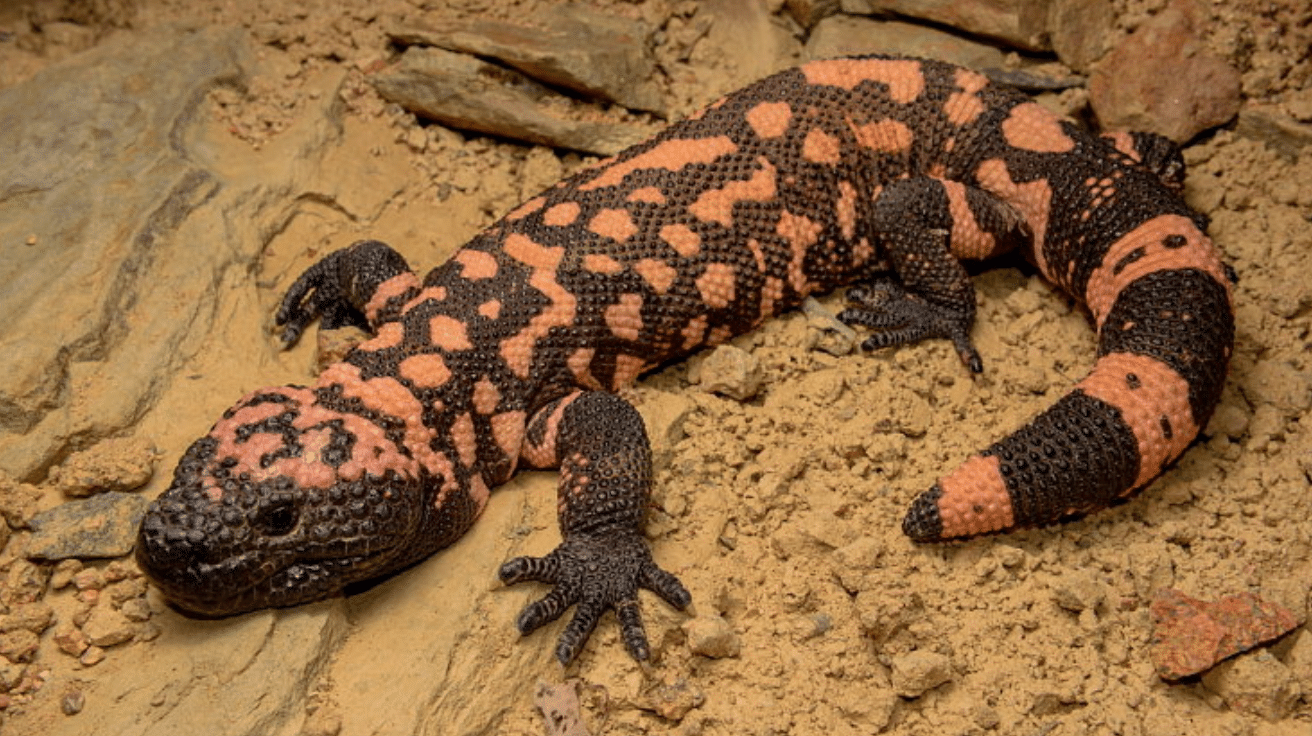
One of the few venomous lizards, the Gila Monster has a sluggish but powerful bite. It stores fat in its tail to survive harsh desert conditions.
- Scientific Name: Heloderma suspectum
- Where Found: Southwestern United States, Northern Mexico
- Conservation Status: Near Threatened
8. Thorny Devil
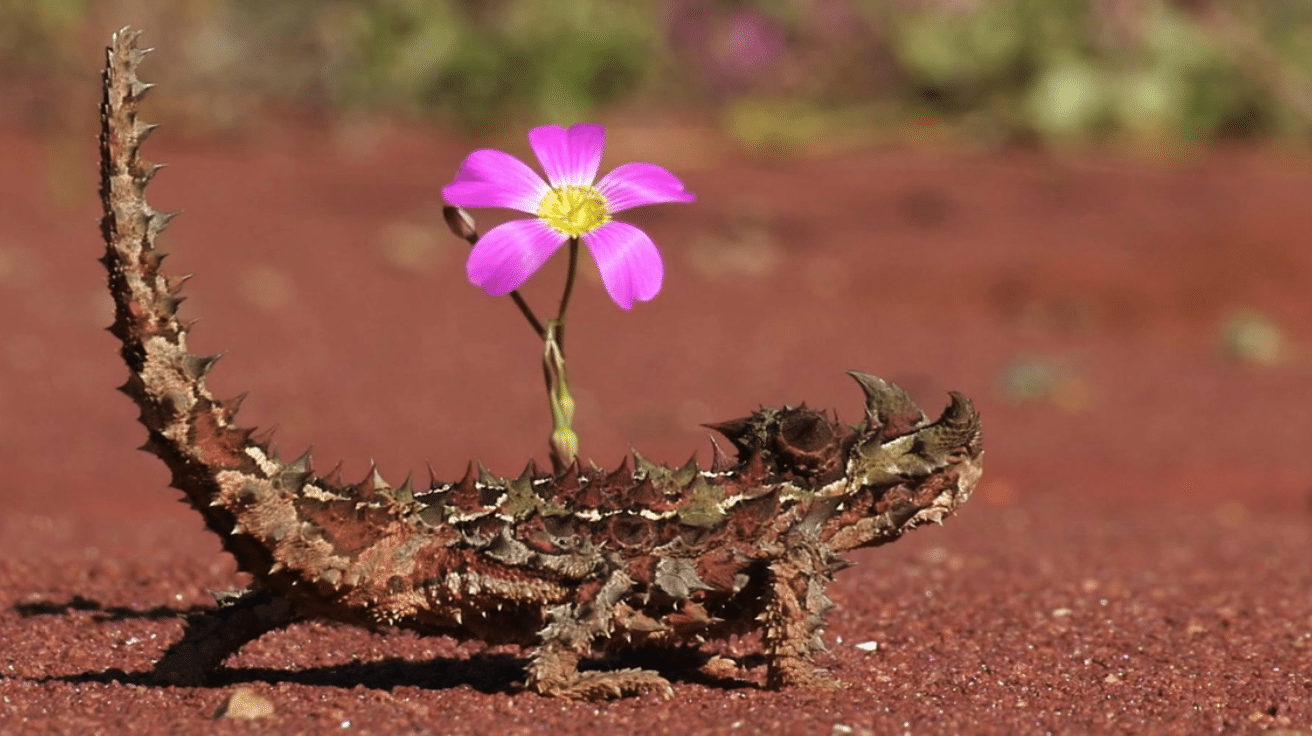
This spiky lizard blends into the desert landscape and drinks water by absorbing moisture through its skin, directing it to its mouth via grooves.
- Scientific Name: Moloch horridus
- Where Found: Australian deserts
- Conservation Status: Least Concern
9. Desert Tortoise
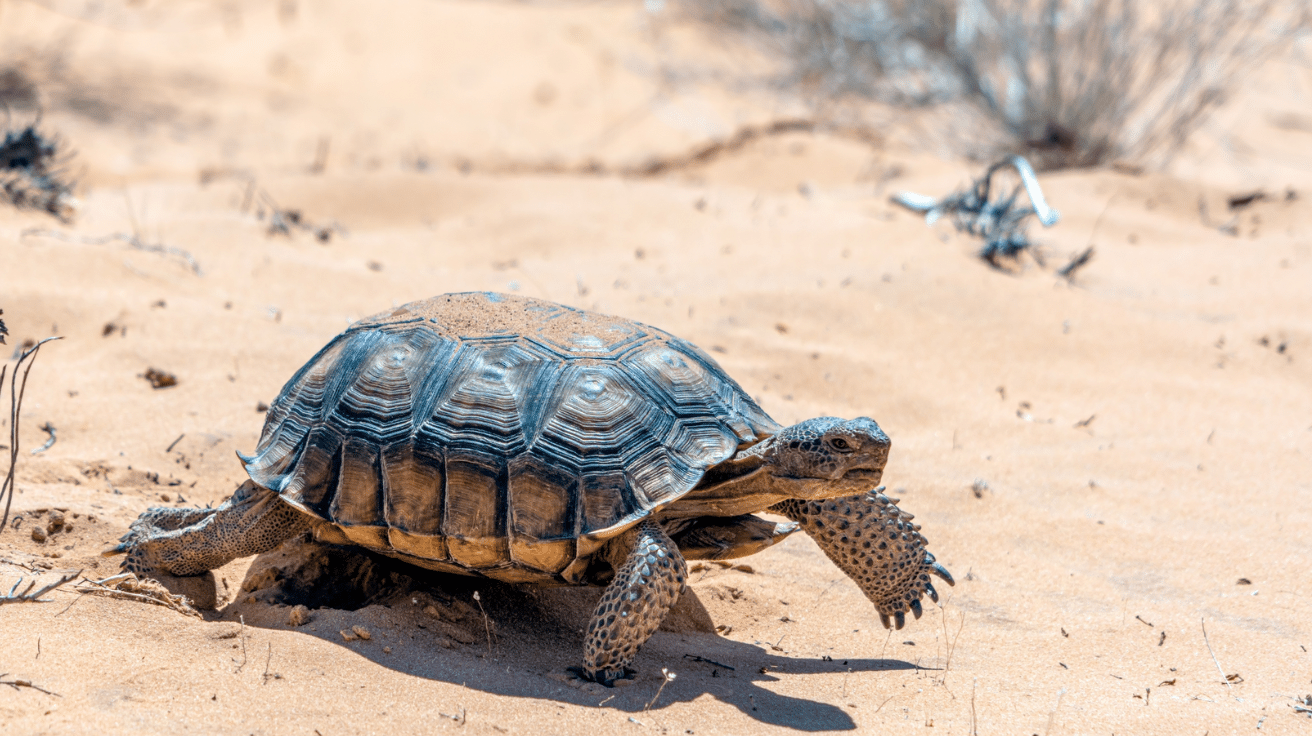
With a tough shell for protection, the Desert Tortoise survives extreme heat by burrowing underground. It can go a year without drinking water.
- Scientific Name: Gopherus agassizii
- Where Found: Southwestern United States, Northern Mexico
- Conservation Status: Vulnerable
10. Texas Horned Lizard
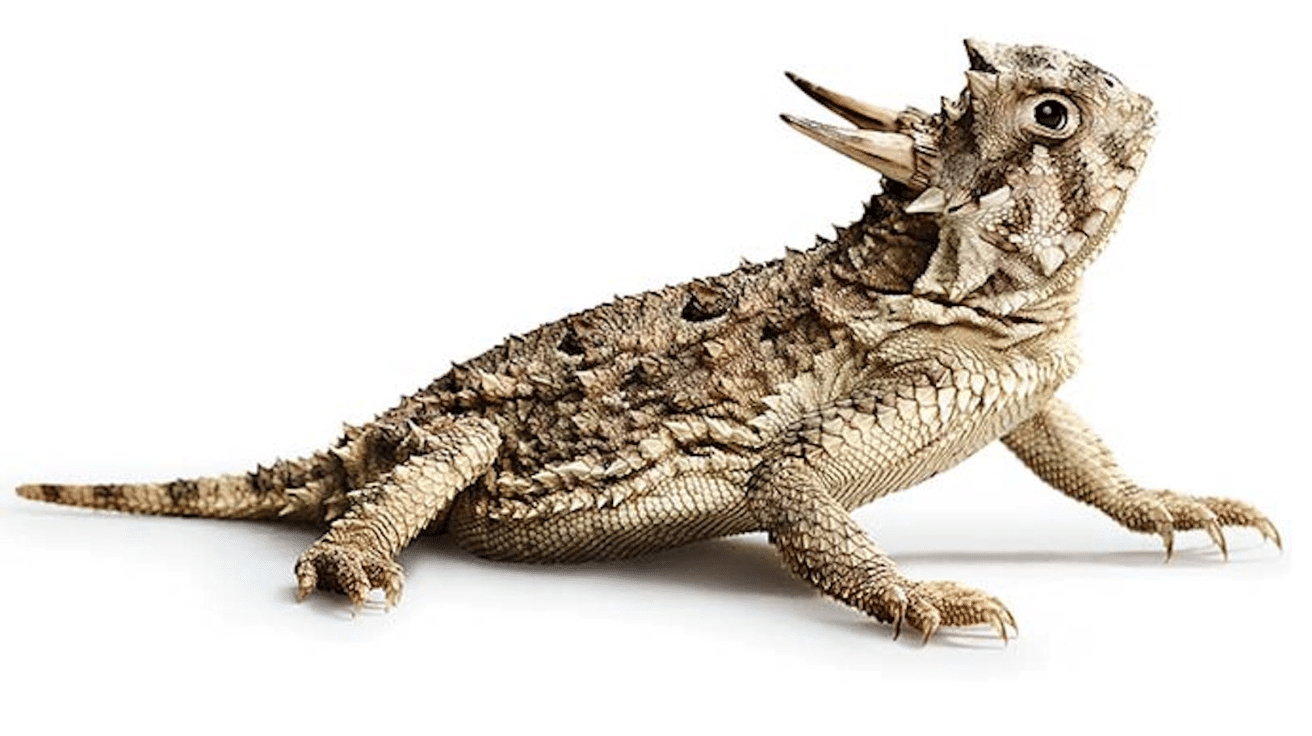
This lizard defends itself by squirting blood from its eyes to deter predators. Its spiky body provides camouflage in desert environments.
- Scientific Name: Phrynosoma cornutum
- Where Found: Southern United States, Mexico
- Conservation Status: Near Threatened
11. Desert Hedgehog
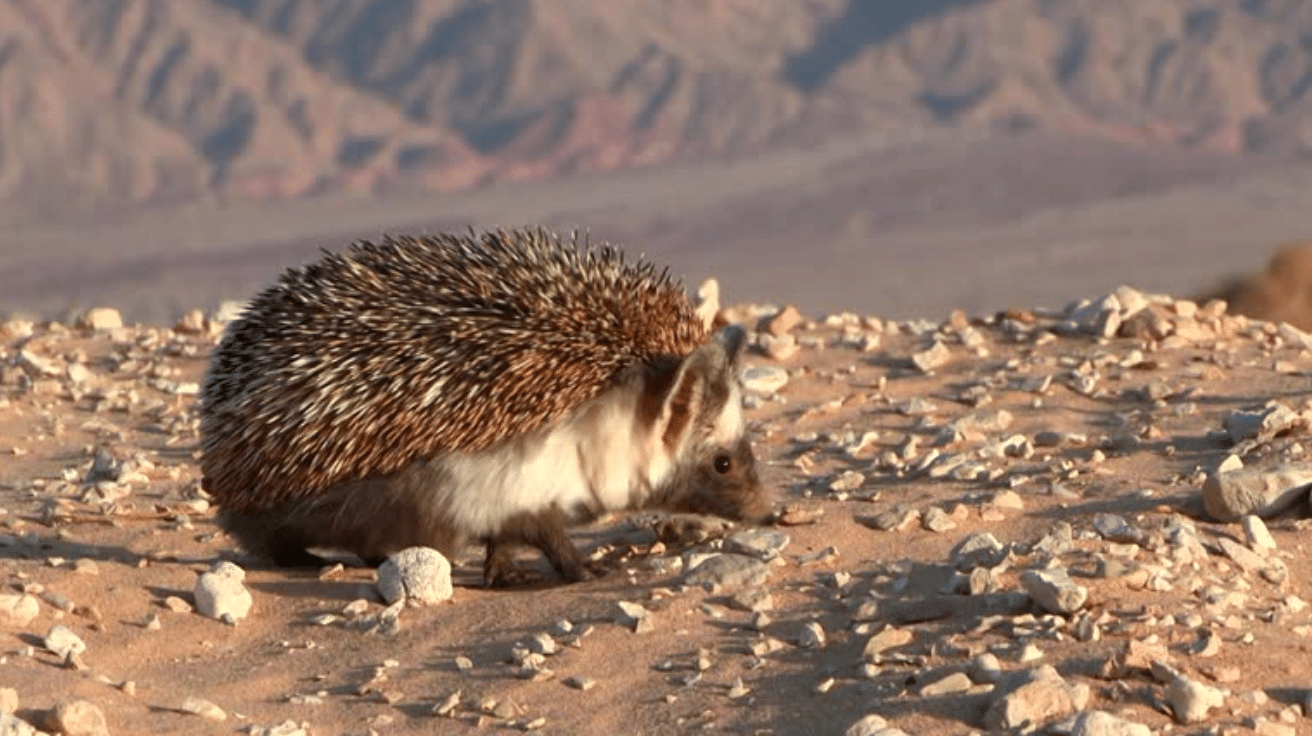
A small nocturnal mammal covered in spines, the desert hedgehog is well adapted to harsh desert environments. It curls into a tight ball when threatened, using its spines for protection.
- Scientific Name: Paraechinus aethiopicus
- Where Found: North Africa, Middle East
- Conservation Status: Least Concern
12. Oryx
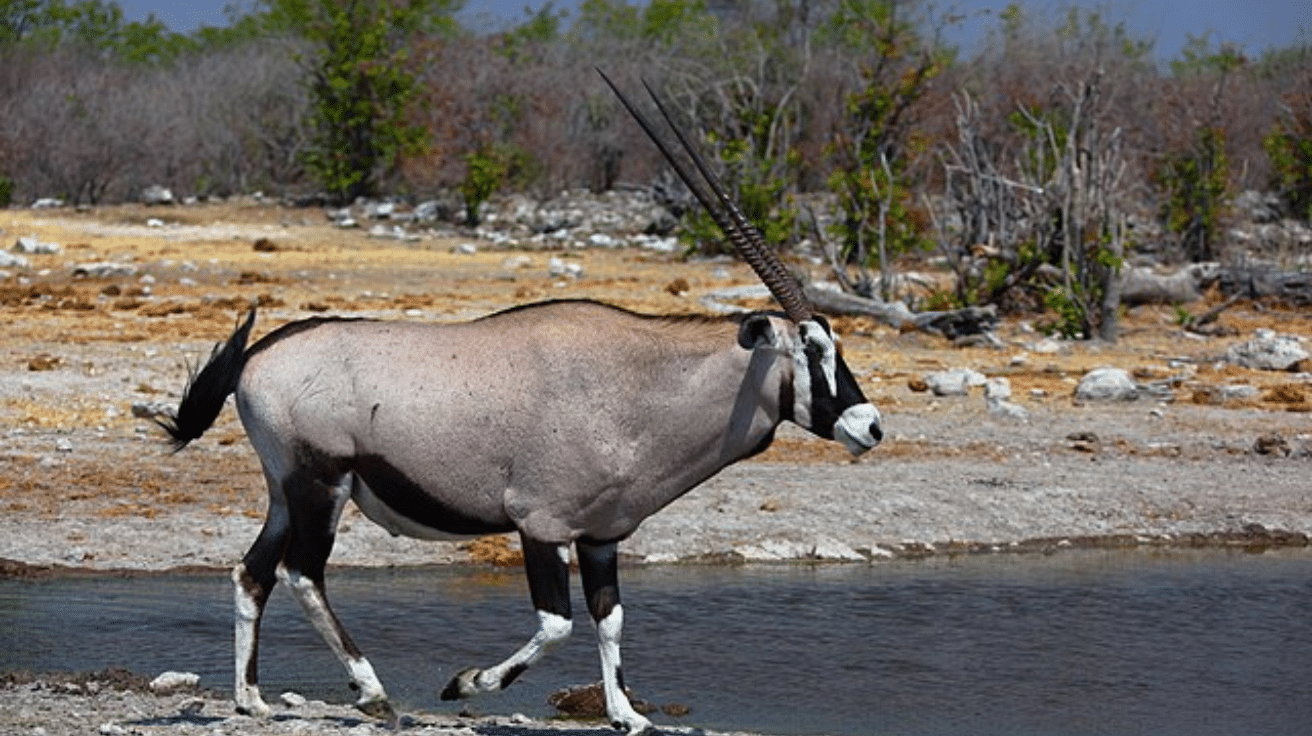
A striking antelope species with long, straight horns, the oryx is well adapted to desert life, capable of surviving without water for extended periods. It can regulate body temperature to cope with extreme heat.
- Scientific Name: Oryx dammah (Scimitar-horned Oryx), Oryx leucoryx (Arabian Oryx)
- Where Found: North Africa, Arabian Peninsula
- Conservation Status: Varies by species (Scimitar-horned Oryx – Extinct in the Wild, Arabian Oryx – Vulnerable)
13. Golden Mole
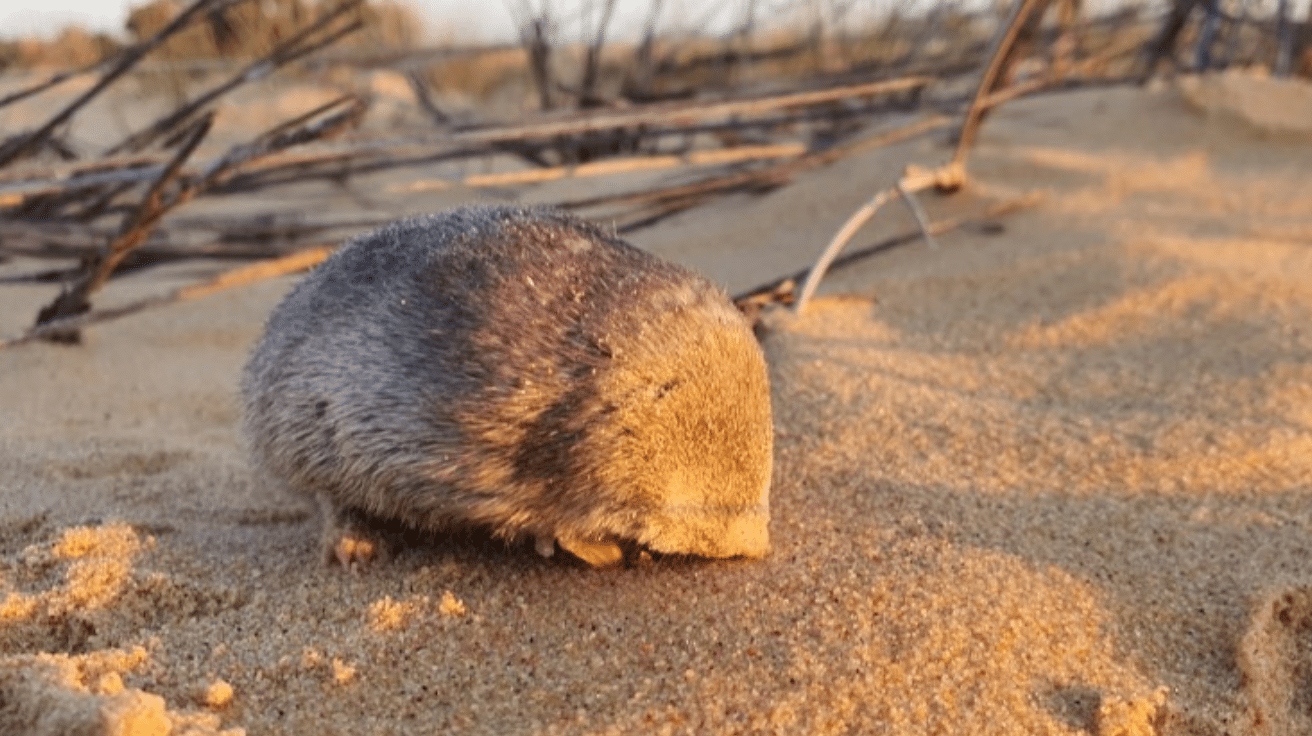
Golden moles are blind, burrowing mammals that “swim” through sandy soil. Their iridescent fur helps reduce friction while moving underground.
- Scientific Name: Chrysochloridae (family)
- Where Found: Southern Africa
- Conservation Status: Varies by species
14. Namib Desert Beetle
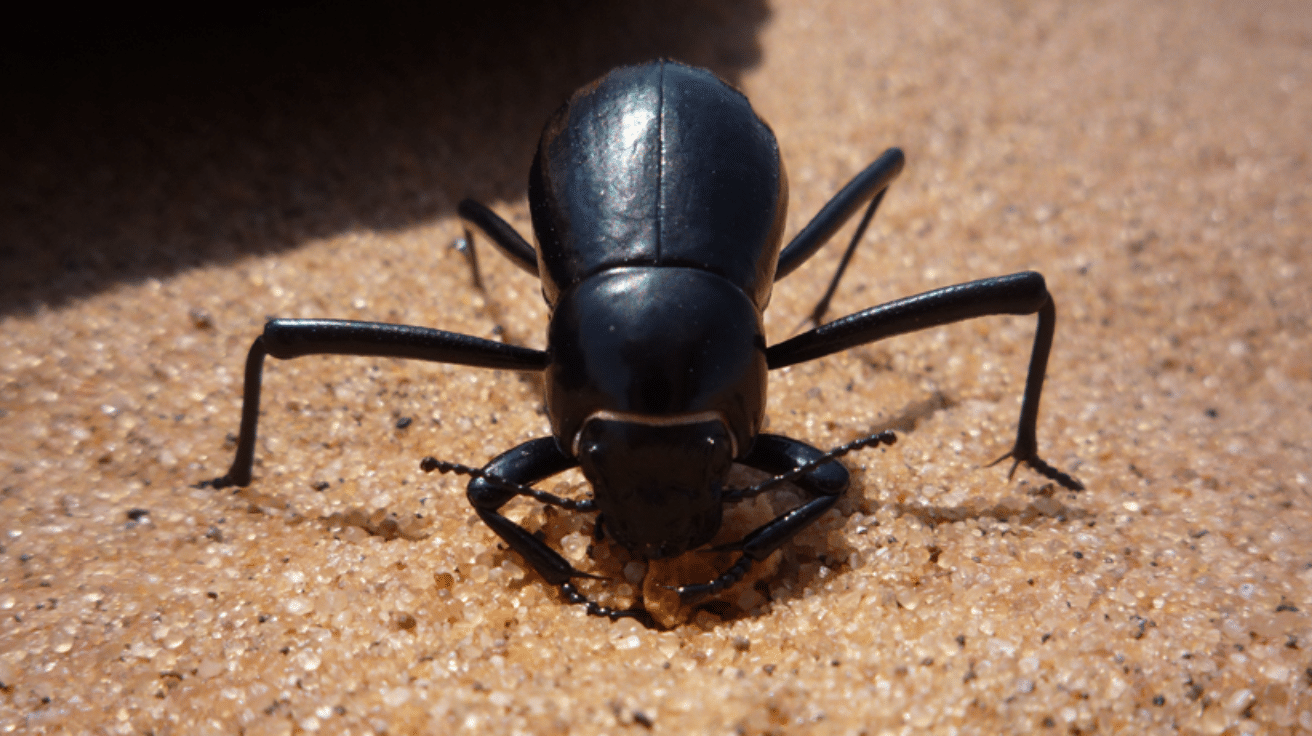
This beetle has an extraordinary ability to collect water from morning fog using its textured shell. It survives in one of the driest places on Earth by condensing water droplets on its back.
- Scientific Name: Stenocara gracilipes
- Where Found: Namib Desert, Southern Africa
- Conservation Status: Not Evaluated
15. Pallid Bat
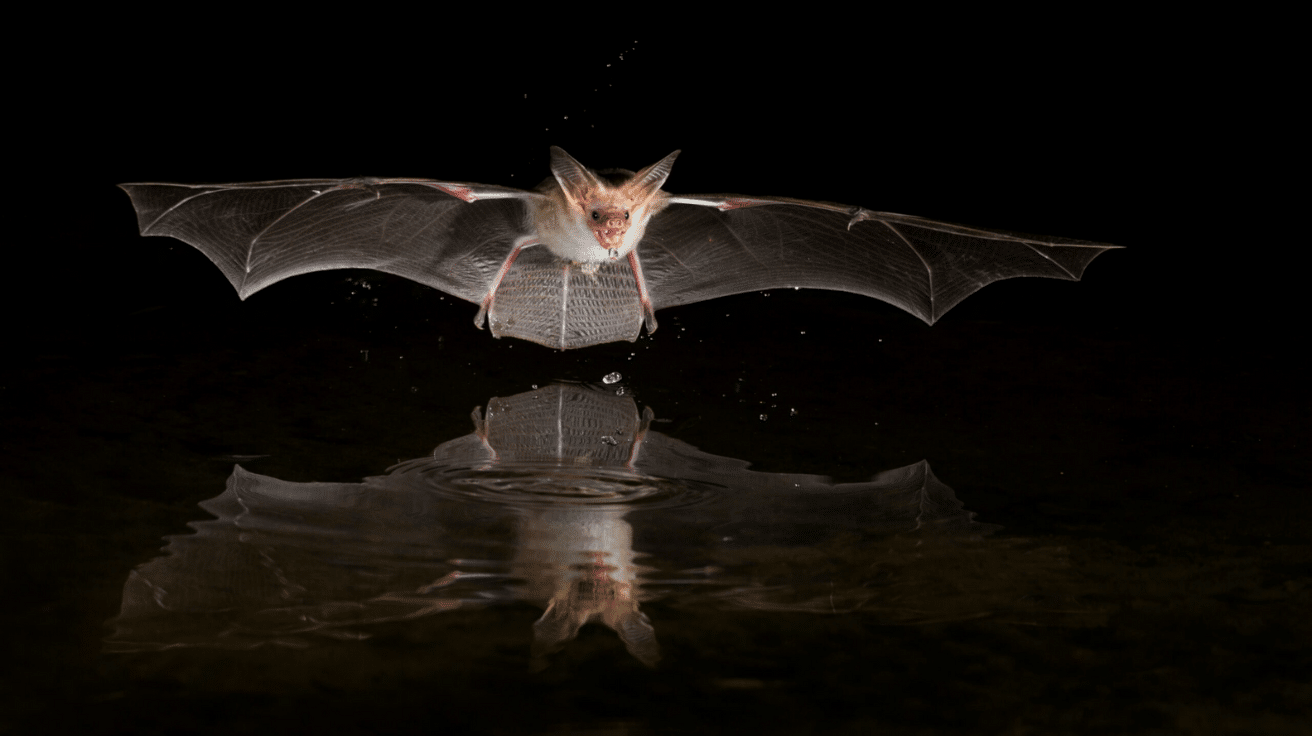
A large-eared bat species that hunts scorpions and insects, the pallid bat is resistant to scorpion venom and is an essential predator in desert ecosystems.
- Scientific Name: Antrozous pallidus
- Where Found: Southwestern United States, Mexico
- Conservation Status: Least Concern
16. Horned Viper
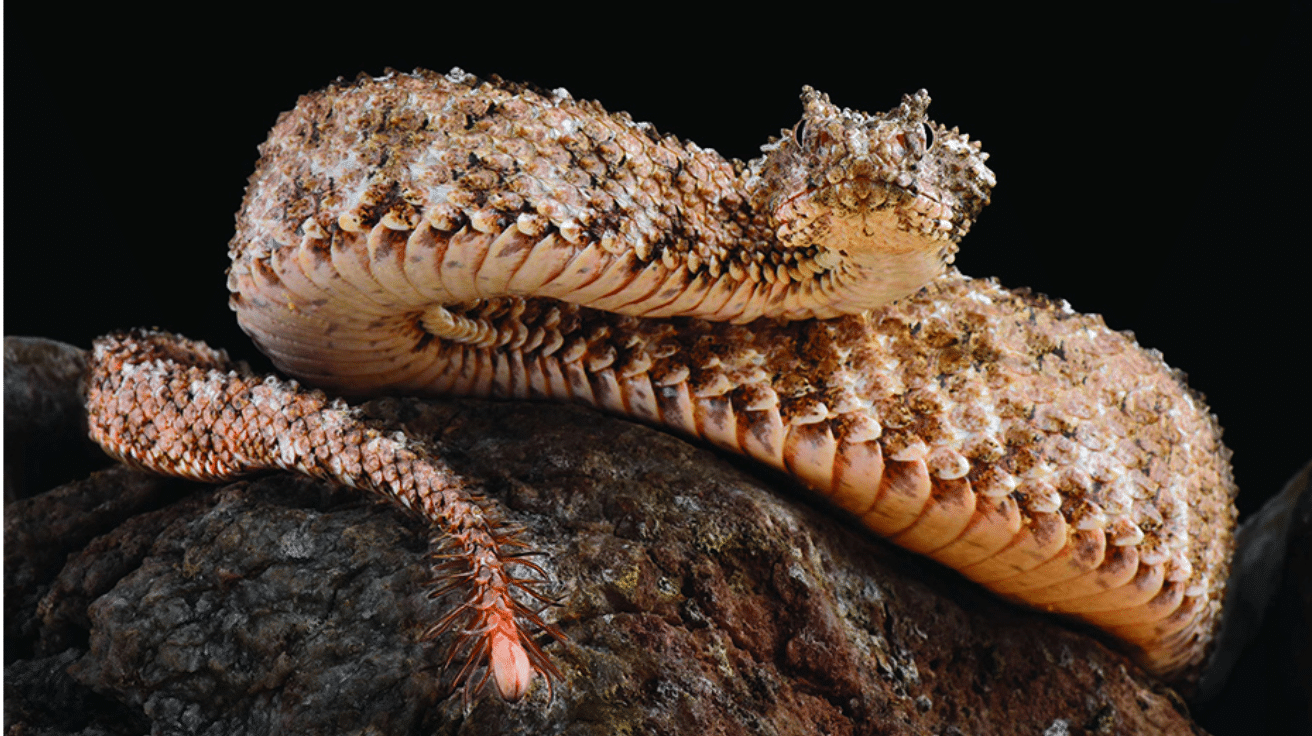
This venomous snake has horn-like scales above its eyes and buries itself in the sand to ambush prey. It moves in a sidewinding motion to direct hot desert terrain.
- Scientific Name: Cerastes cerastes
- Where Found: North Africa, Middle East
- Conservation Status: Least Concern
17. Monitor Lizard
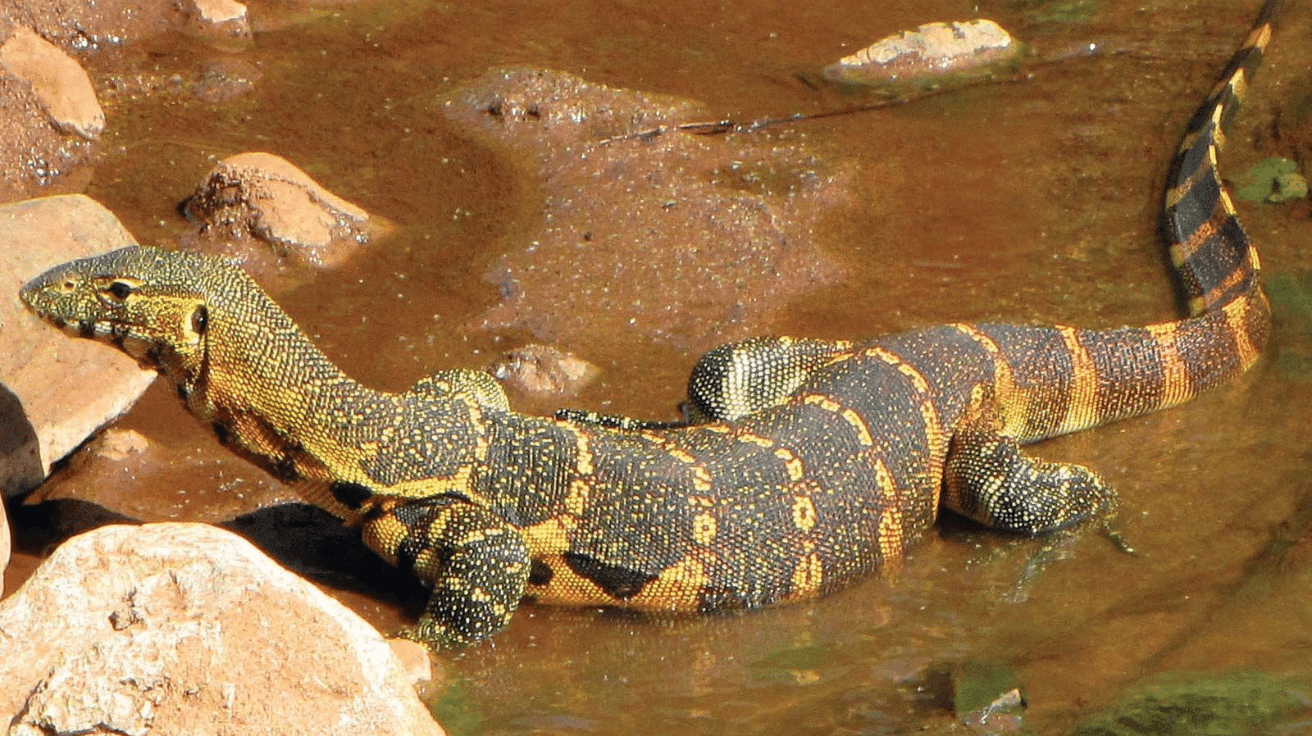
Large and powerful, Monitor Lizards are skilled hunters, using their forked tongues to track prey. Some species, like the Desert Monitor, thrive in arid landscapes.
- Scientific Name: Varanus spp.
- Where Found: Africa, Asia, Australia
- Conservation Status: Varies by species
18. Sand Cat
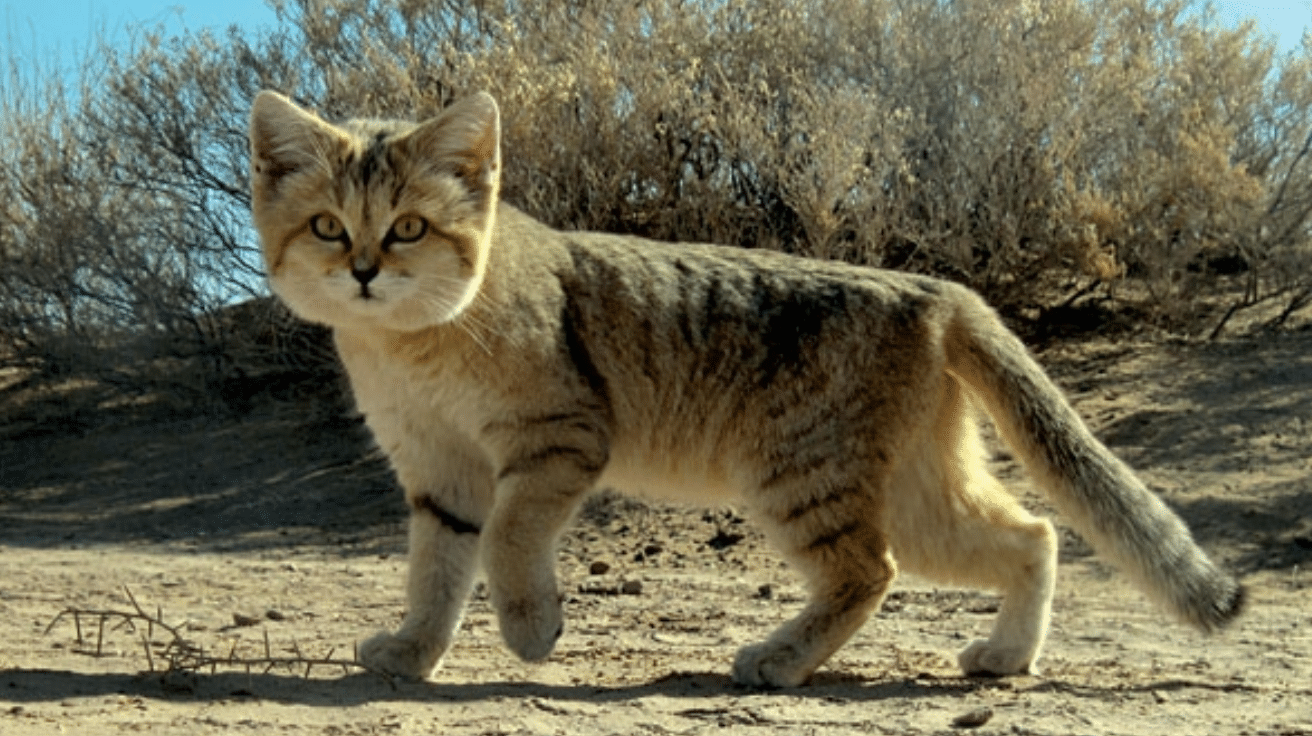
A master of desert survival, the Sand Cat has thick fur on its paws to protect against scorching sand. It is elusive and primarily nocturnal.
- Scientific Name: Felis margarita
- Where Found: North Africa, Middle East, Central Asia
- Conservation Status: Least Concern
19. Cape Ground Squirrel
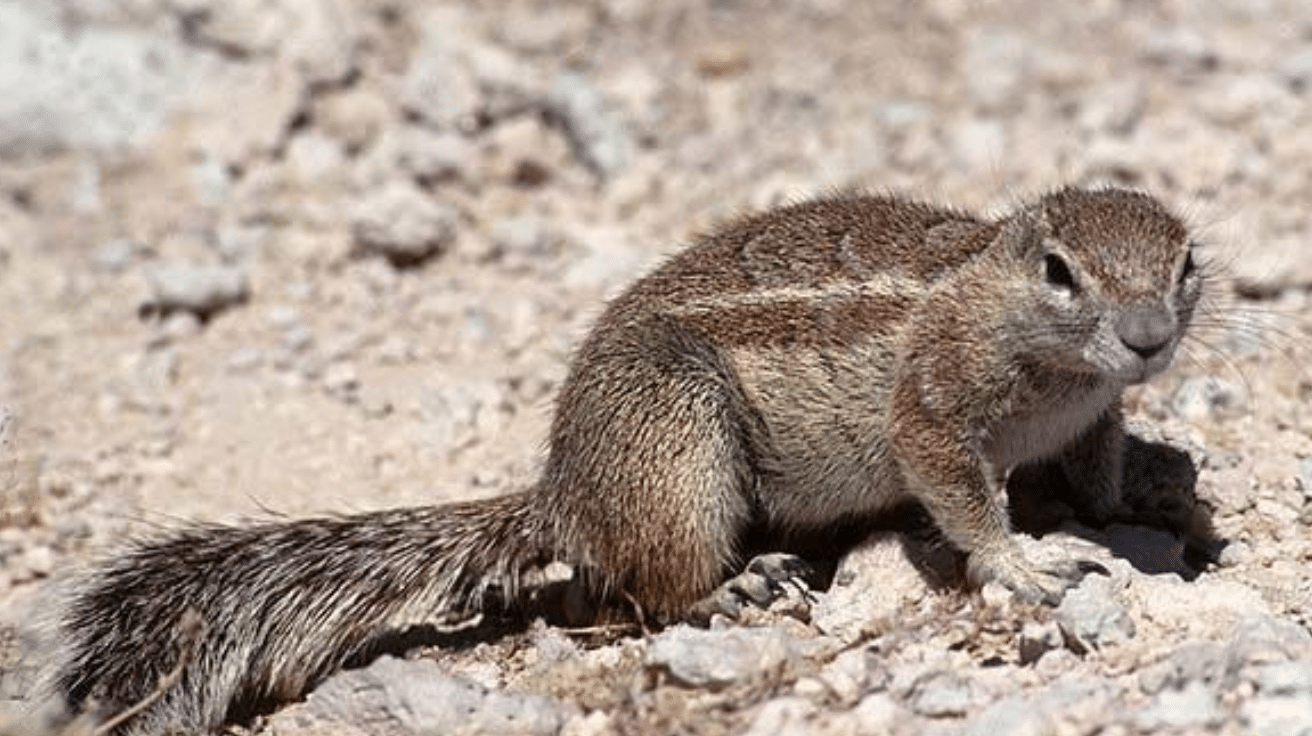
Unlike many desert mammals, this squirrel is active during the day, using its bushy tail as a parasol for shade. It lives in burrow systems for protection.
- Scientific Name: Xerus inauris
- Where Found: Southern Africa
- Conservation Status: Least Concern
20. Crested Porcupine
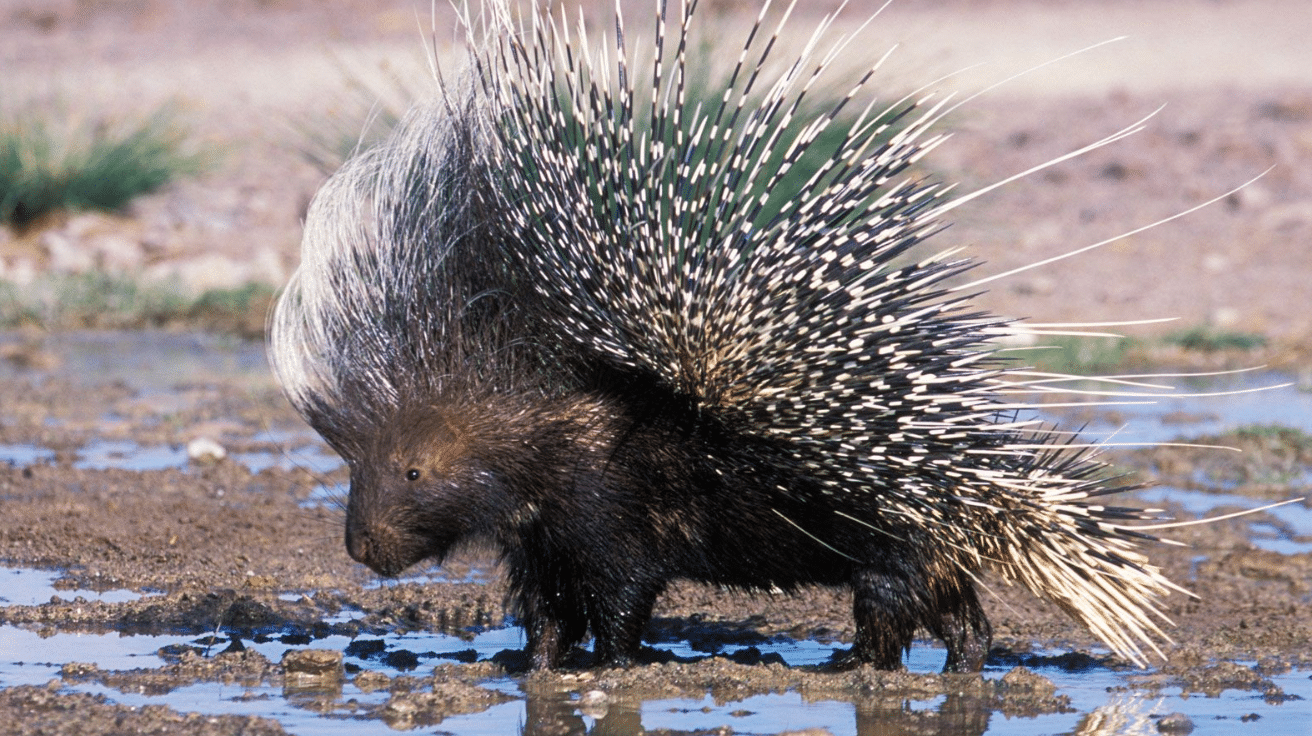
One of the largest porcupines, it uses long, sharp quills for defense against predators. It inhabits rocky and semi-arid regions, foraging at night.
- Scientific Name: Hystrix cristata
- Where Found: Africa, Southern Europe
- Conservation Status: Least Concern
21. Chilean Flamingo
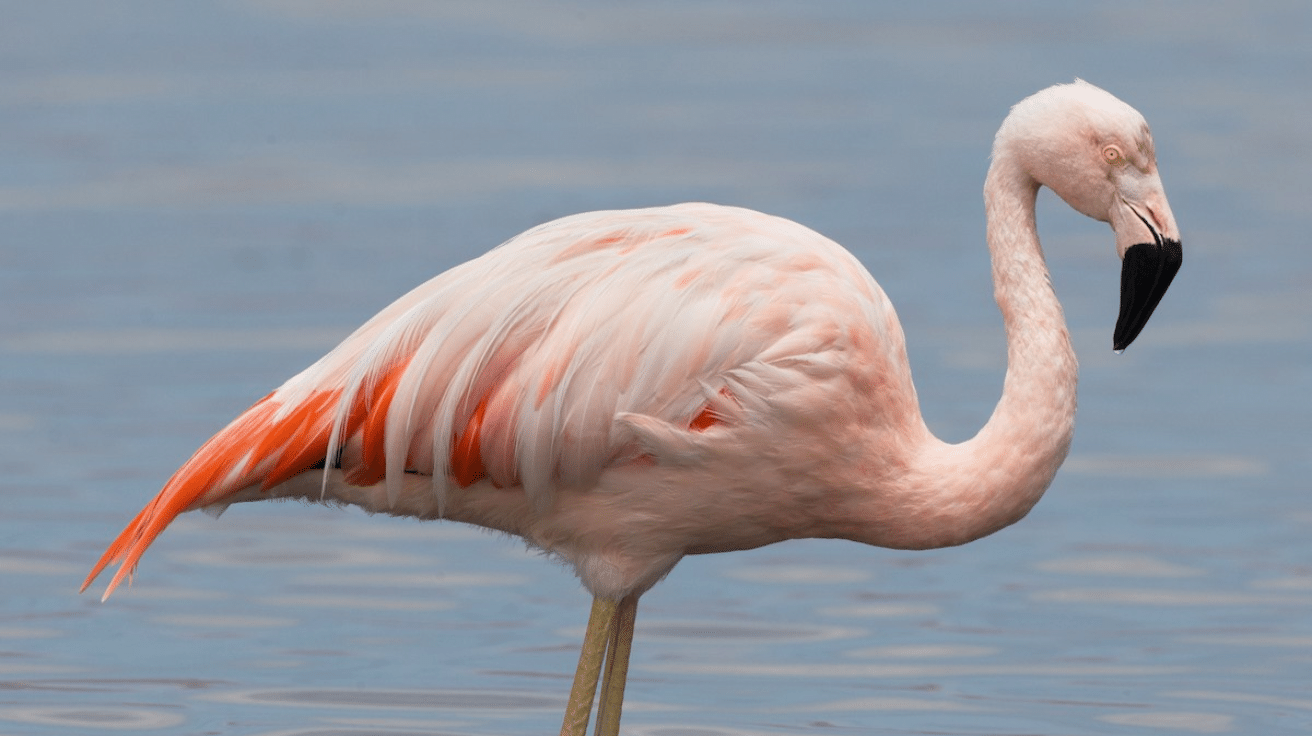
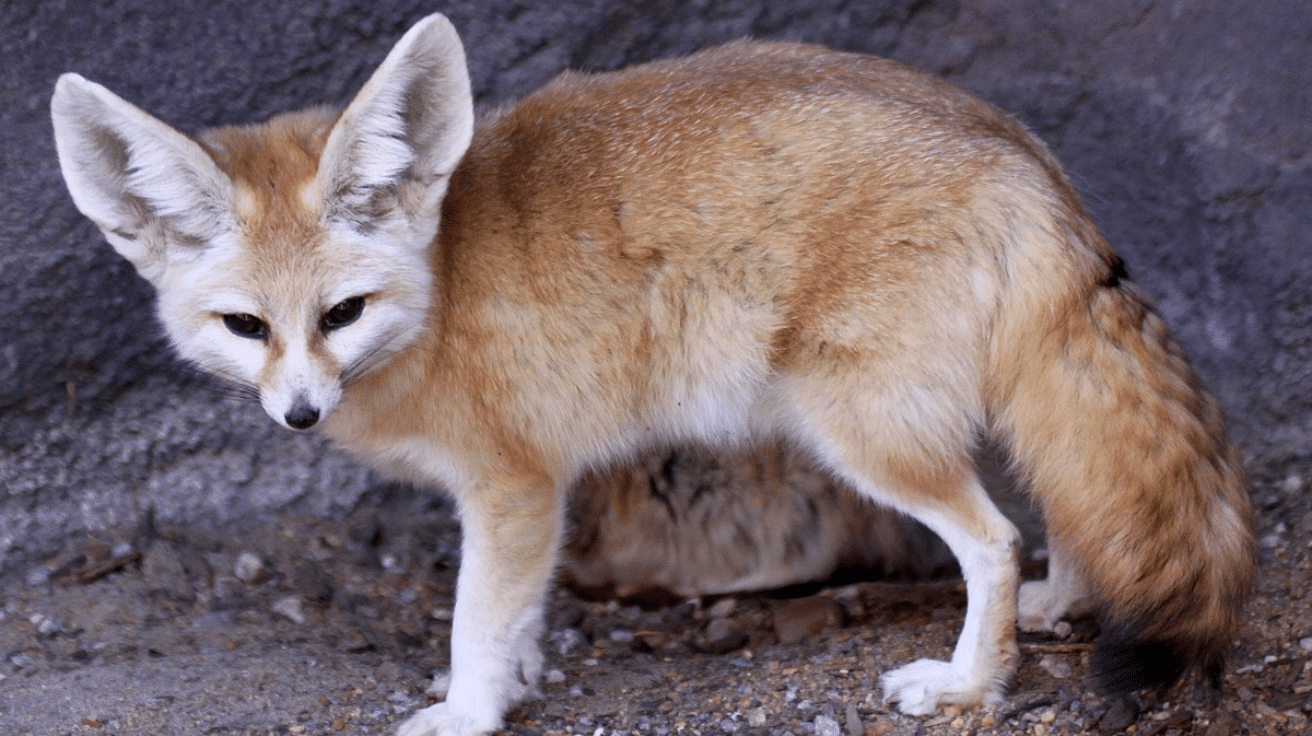
This striking pink bird thrives in salty and alkaline wetlands, feeding on algae and small invertebrates. Its color comes from carotenoid-rich food sources.
- Scientific Name: Phoenicopterus chilensis
- Where Found: South America, Andean Deserts
- Conservation Status: Near Threatened
Other Animals That Live in the Desert
22. Burrowing Owl
23. Sandgrouse
24. Egyptian Vulture
25. Roadrunner
26. Cactus Wren
27. Greater Hoopoe-Lark
28. Lappet-faced Vulture
29. Secretary Bird
30. Verreaux’s Eagle
31. Brown-necked Raven
32. White-rumped Swift
33. Desert Lark
34. Trumpeter Finch
35. Pale Crag Martin
36. Cream-colored Courser
37. Black-crowned Sparrow-Lark
38. Greater Flamingo
39. Pharaoh Eagle-Owl
40. Namaqua Dove
41. Chestnut-bellied Sandgrouse
42. Spotted Thick-knee
43. Black Kite
44. Hoopoe
45. Isabelline Wheatear
46. Desert Wheatear
47. Rufous-tailed Scrub Robin
48. White-crowned Wheatear
49. Barn Owl
50. Blue-cheeked Bee-eater
51. Eurasian Hobby
52. Montagu’s Harrier
53. Common Kestrel
54. Short-toed Snake Eagle
55. Lesser Kestrel
56. Long-legged Buzzard
57. Tawny Eagle
58. Bonelli’s Eagle
59. Red-necked Falcon
60. Greater Short-toed Lark
61. Bar-tailed Lark
62. Bimaculated Lark
63. Thick-billed Lark
64. Dunn’s Lark
65. Blackstart
66. Rufous-crowned Roller
67. Trumpeter Hornbill
68. Arabian Babbler
69. White-browed Coucal
70. Rose-ringed Parakeet
71. Pied Crow
72. Fan-tailed Raven
73. House Swift
74. Desert Tawny Owl
75. Grey Hypocolius
76. Eastern Imperial Eagle
77. Griffon Vulture
78. Bearded Vulture
79. White-backed Vulture
80. Black Stork
81. Abdim’s Stork
82. Yellow-billed Stork
83. Spur-winged Lapwing
84. Caspian Plover
85. Temminck’s Courser
86. Eurasian Collared Dove
87. Laughing Dove
88. Bruce’s Green Pigeon
89. Striated Heron
90. Little Egret
91. Black-winged Stilt
92. Kentish Plover
93. Eurasian Stone-curlew
94. Collared Pratincole
95. Common Redshank
96. Cream-bellied Sandgrouse
97. Yellow-throated Sandgrouse
98. Pin-tailed Sandgrouse
99. Crowned Sandgrouse
100. Rosy-faced Lovebird
101. Desert Spiny Lizard
Role of Desert Animals in The Ecosystem
Desert animals play a vital role in maintaining the balance of desert ecosystems. Their unique adaptations and behaviors help regulate the environment, supporting the food web and ensuring biodiversity.
Here’s a breakdown of their roles:
- Desert animals help keep their sandy homes in perfect balance. Small diggers like mice and rabbits mix up the soil when they make their homes, which helps plants grow better.
- Seed spreaders play a key role too. When birds and rodents carry seeds in their cheeks or bellies, they plant new life across the desert.
- The food chain tells an important story. Little insects feed the lizards, while lizards feed the snakes and birds. Even the biggest predators like coyotes have jobs to do – they keep other animal groups from getting too big.
- Plant-eaters shape the landscape by munching on specific desert plants.
- Even dead animals help! Their bodies return nutrients to the sandy soil, feeding the next generation of desert life. Each creature, big or small, keeps the desert working just right.
Summing Up
The desert tells a different story when you look closely.
In places where most see only sand and sun, thousands of creatures make their homes and raise their families. Each has found its own path to success.
These 101 animals show us the creative side of nature. From camels that store water in their humps to owls that hunt in the cool night air, desert life comes in many forms. Small changes in body design – like big ears or light fur – make huge differences in survival.
The desert isn’t empty at all. It’s a place where animals work together, creating a world that works for everyone.
Their skills and solutions remind us that nature always finds a way forward.

